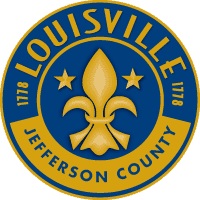
Louisville Metro Government
Louisville is the largest city in the U.S. state of Kentucky, and the county seat of Jefferson County. The city's population at the 2010 census was 741,096 (consolidated; balance total is 597,337). An important internal shipping port in the 19th century, Louisville today is best known as the location of the Kentucky Derby, the first of three annual thoroughbred horse races making up the Triple Crown.